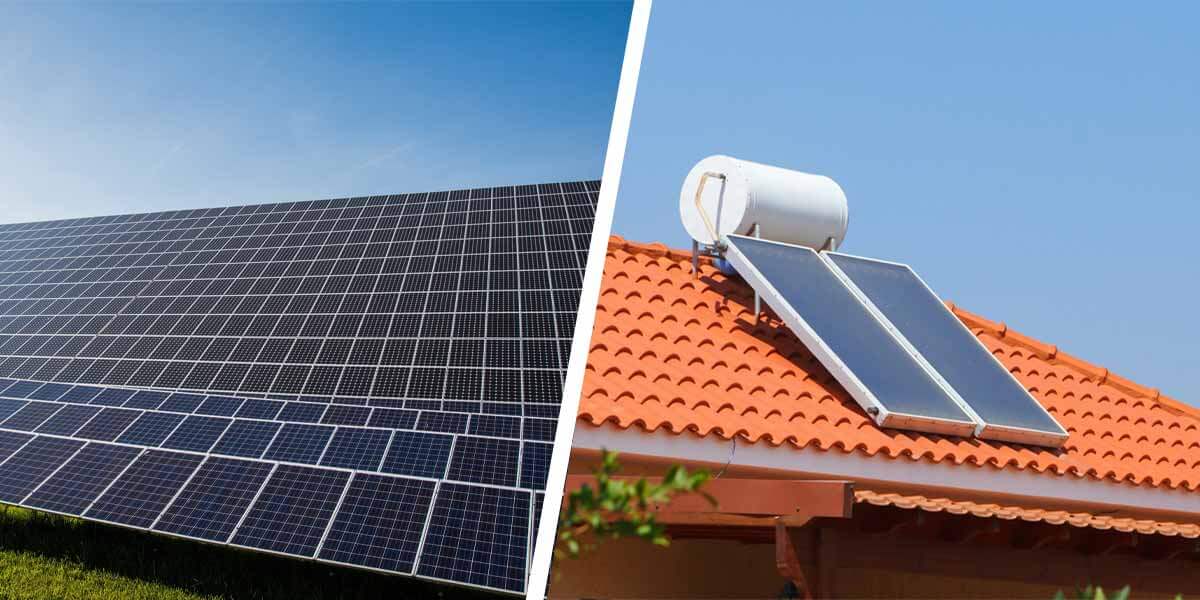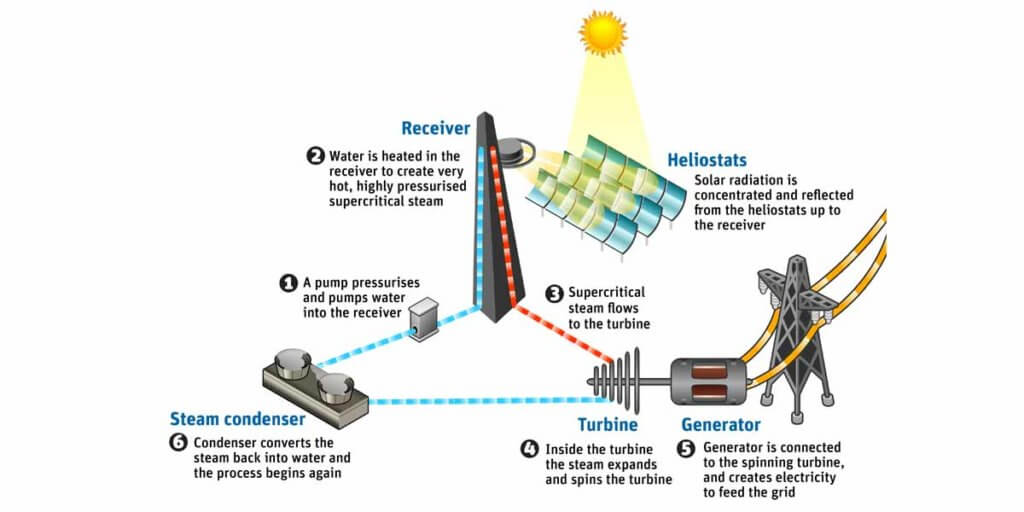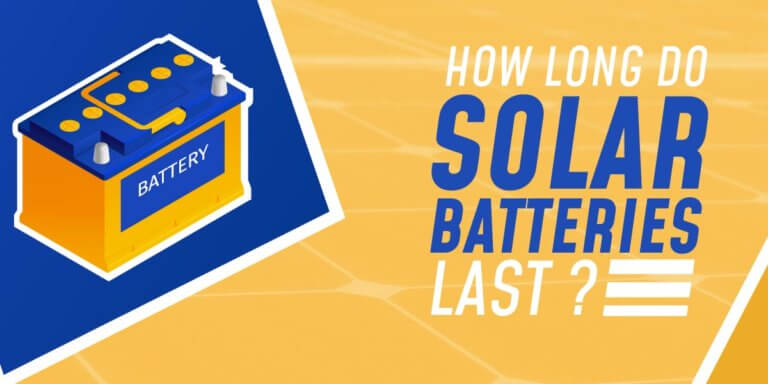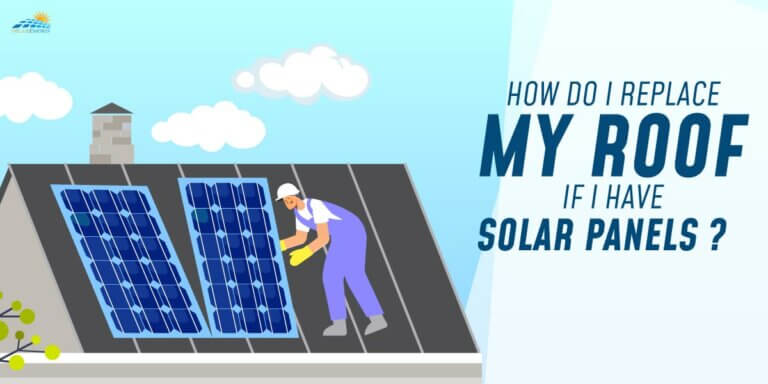Photovoltaic vs Solar Thermal – A Detailed Guide

Solar energy is the need of the hour in terms of usable energy sources, especially recently. If you’re concerned about a more sustainable livelihood in terms of your energy consumption and generation, then chances are you may have seriously contemplated installing solar panels from any brand for your household needs as well.
However, did you know that you can choose between two categories of solar energy technologies to figure out which one is the best for you? Here, you will find a detailed account of the two kinds of solar energy sources – namely, solar thermal vs photovoltaic systems.
Each, while working on the same principle of drawing their energy from the sun, has various means and usages. Learn more about the technology that runs both photovoltaic vs solar thermal systems and how they differ from each other in terms of various categories – and most importantly, which one you should opt for.
What Is Solar Thermal System?
As the name suggests, the most essential feature of thermal systems is that they’re primarily related to the conductivity of heat. So if you’re wondering, “what is a solar thermal system” it’s pretty simple.
Solar thermal systems generate energy with the sun’s heat, similar to solar PV systems, but the fundamental difference is that the former heats up the liquid to high temperatures with the sun’s heat, which is then converted to electrical energy.
This process will be explained in the next section, but solar thermal systems can be used to heat both water and other surfaces in your household. Solar thermal systems have several components: a pump, control panel, insulated pipes, and a heat exchanger.
The most important components, as you might have guessed, are the collectors and the heat transfer fluid that is primarily responsible for energy generation. Since solar thermal systems essentially have to do with heating up fluids for energy generation, they are useful in water heating.
How Does Solar Thermal Work?

As said before, solar thermal energy mainly works with the help of concentrated sunlight that heats up the water, which is then converted into energy. But how does this process happen?
For this, it is essential to understand the structure of solar panels. The electrical tubes in the panels hold water, which is heated through the sun, and the aforementioned pumps then circulate this water.
Essentially, the solar panels are responsible for collecting the sunlight through the collectors positioned on the rooftops, which then heats the liquid present in the tubes. Lastly, the liquid is transferred into a cylinder which then becomes the source of heating energy.
The heated liquid can either be in the form of a liquid or gas, which is then converted to powerful electrical energy used to run generators, engines, and such. That is also why solar thermal energy is an excellent heater when it comes to heating water.
The main concept used here is thermosyphons, with which the water is pushed to provide heat and replace the cooler water constantly.
Having a boiler as a backup would instantly mean you have constant warm water throughout the year with solar thermal energy and also be present in heated floors, ceilings, walls, and other places in the house.
What Is Solar PV System?
In talking about “what is solar PV system,” solar photovoltaic energy, or the solar PV system, is more straightforward than solar thermal energy. Once again, as the name suggests, the photovoltaic panels directly involve the solar PV system and produce electrical energy.
These are perhaps more dependent on sunlight than solar thermal energy, though both service their primary heat source from the sun itself.
The PV system is different because it directly makes use of photovoltaic technology to generate energy. There are mainly three kinds of solar PV systems that use photovoltaic technology to generate energy.
They can be categorized into either monocrystalline and polycrystalline PV cells, or thin-film solar cells. While all of these have minutely different compositions, they all use the same technique that solar PV systems use for electrical energy conversion.
Let’s see what this technique is in greater detail. If you are interested in this system, you could look at our articles listing the best portable solar panels and the best solar energy kits for homes.
How Does Solar Photovoltaic Work?

Here, the photovoltaic effect comes into play when talking about how a solar photovoltaic system works. It also uses concepts such as photons, electrons, semiconductors, silicon, and such.
Basically, this process comes about when a particle of light, also called the photon, comes into contact with the semiconductor. After this impact, they are converted into electrons, which then carry out the primary function of energy generation.
When talking about solar panels, it is essential to know that their photovoltaic power comes mainly from semiconductors inside each photovoltaic cell. These photovoltaic cells then combine on a larger scale to form the solar panels you install on your rooftop.
Semiconductors such as polycrystalline and monocrystalline are thus the main components of your solar panels, and it’s only natural that your PV panel will be able to generate energy directly. With the help of sunlight splitting the photon and converting it into an electron, which will then begin to release electrical currents.
Of course, this entire system will have to be connected to the larger grid to generate and conduct electricity properly. This system’s components will be useful for converting the direct current produced by the PV cells into AC, which you can use for various purposes.
Solar Thermal vs Photovoltaic: The Real Difference
| Technology | Despite the energy source being the same for both systems, the way the energy is used in Solar thermal and photovoltaic systems are different. |
| Size And Capacity | Solar thermals are smaller than photovoltaic systems in terms of size, and they also have higher conversion rate. However, PV Systems have a larger interior space. |
| Efficiency And Energy Storage | Solar thermals are much more efficient than PV systems as cloudy days and rain do not affect energy conversion as much as they do in PV systems. |
| Maintenance | Solar thermal systems have a higher maintenance cost than PV systems. PV systems need to be cleaned twice a year while maintenance of solar thermal systems can cost as much as $200. |
| Cost | The cost of both the systems are a little similar depending on the models you choose. A PV system can cost anywhere between $5000 – $8000 while a solar heater can cost around $10000. |
1. Technology
As you have observed by now, there is a startling difference between the functioning of solar photovoltaic vs solar thermal systems, even though both their energy sources are the same.
Solar thermal systems mainly function by heating up fluids with concentrated sunlight and then propelling it to convert them into usable energy, while solar photovoltaic systems, on the other hand, employ a more complex mechanism to do the same.
It generates energy based on the photovoltaic effect, which is basically the conversion of photons into electrons with the help of semiconductors that are present in the solar cells comprising of the solar panels at large.
The presence of the semiconductors is necessary for solar photovoltaic systems, while on the other hand, it is necessary to have an almost constant supply of sunlight with solar thermal systems.
2. Size And Capacity
In terms of sizes, solar thermal systems take up considerably less space than solar PV systems. When talking of photovoltaic vs solar, with solar thermal systems requiring around three to four square meters of space, solar PV systems can require up to ten square meters to function properly.
The difference in photovoltaic vs solar thermal is mainly because solar PV systems require a large surface area to allow for more solar cells on the surface.
And as opposed to the 20% radiation converted from sunlight into electric energy by solar PV systems, solar thermal systems can convert around 90% of the heat they receive from the sun into electric energy.
However, the interior space required in solar thermal panels vs photovoltaic panels is higher for solar PV systems – in the latter, you can have room for the cables and the transformer, and you’re good to go!
3. Efficiency And Energy Storage
Here, we’ll need to consider the difference between the technologies of solar thermal panels vs photovoltaic panels once again. The former converts the sun’s rays into energy, while the latter transforms the heat received from the sun into energy instead.
This ultimately means that solar PV systems function at their best when receiving direct sunlight – on cloudy days, their performance reduces by around 30%. They’re significantly worse in storing energy than solar thermal systems, which use Thermal Energy Storage technologies.
In the latter, heated water can be stored for long periods, even after sundown or in cloudy weather. Solar thermal energy is popular for being efficient in energy storage since it supplies a steady flow of power at all times and is great for energy storage as well.
4. Maintenance
Maintenance costs are an often overlooked but highly crucial part of choosing between solar thermal energy vs photovoltaic.
For solar PV systems, maintenance costs are extremely low. Not many financial resources and efforts have to be spent to keep your solar PV systems in optimal condition.
All you have to do is clean your solar panels twice a year, and they’ll be in the best possible condition for years to come. In talking of maintenance costs in solar photovoltaic vs solar thermal systems, on the other hand, solar thermal systems require comparatively higher maintenance costs – up to $200 per year.
5. Cost
Conclusively, it can be said the difference in the costs of solar thermal vs solar PV systems is quite minimal. Both of them can be considered long-term investments and can thus be quite expensive.
Solar PV systems have been pricier than solar thermal systems by far; however, their costs have now been reduced due to tariffs and incentive payments.
Now, solar PV systems can be priced at anywhere from $5000 – $8000, including all the installation costs, labor put in, and all system parts. Similarly, solar thermal systems are priced at around $10,000, excluding tariffs or incentives, after which they can get substantially cheaper.
Photovoltaic vs Solar Thermal: Which is Better?
As always, it comes right down to your needs and what you’re planning to get out of your solar energy sources the most. Both of these sources of solar energy are extremely lucrative and are equally helpful at their respective functions.
Both of these solar energy systems can be installed into your home so that you can reduce your electricity costs as much as possible while also looking for a greener alternative – as opposed to drawing your energy from non-renewable sources.
Photovoltaic solar systems, for instance, can reduce your household electricity bills and turn any surplus electrical energy you may generate into a source of revenue for you.
On the other hand, solar thermal systems are the best as far as water heating services are concerned. So if you spend much of your funds on heating and water, then you can consider looking into solar thermal systems instead.






